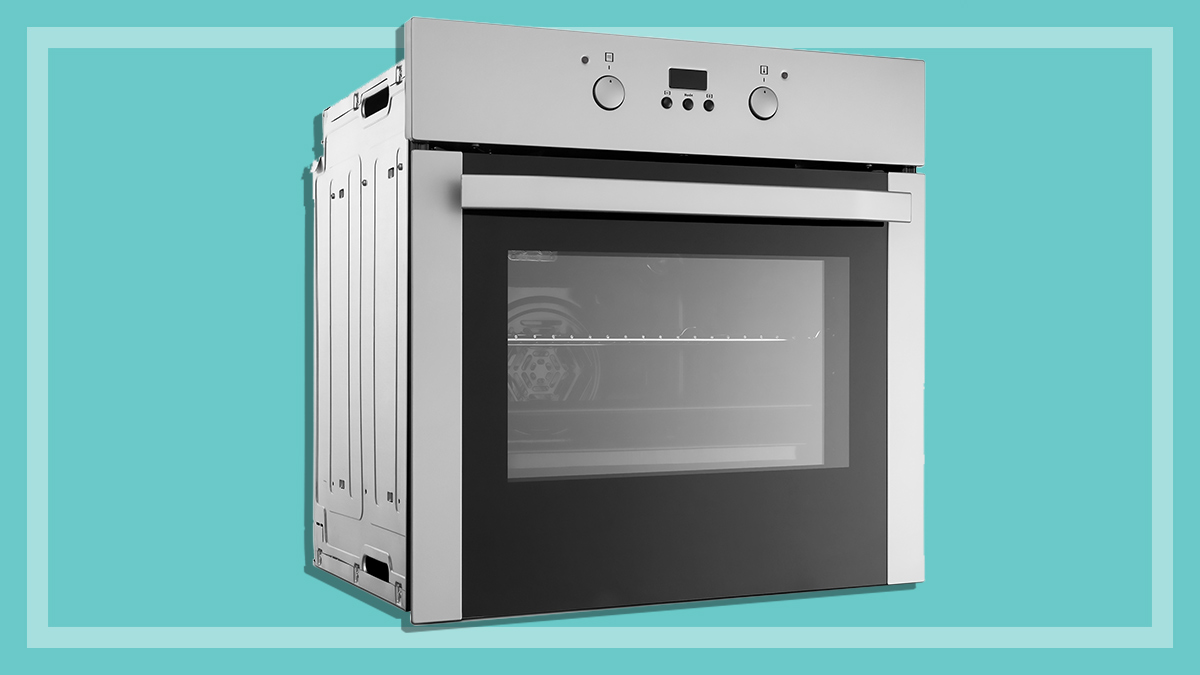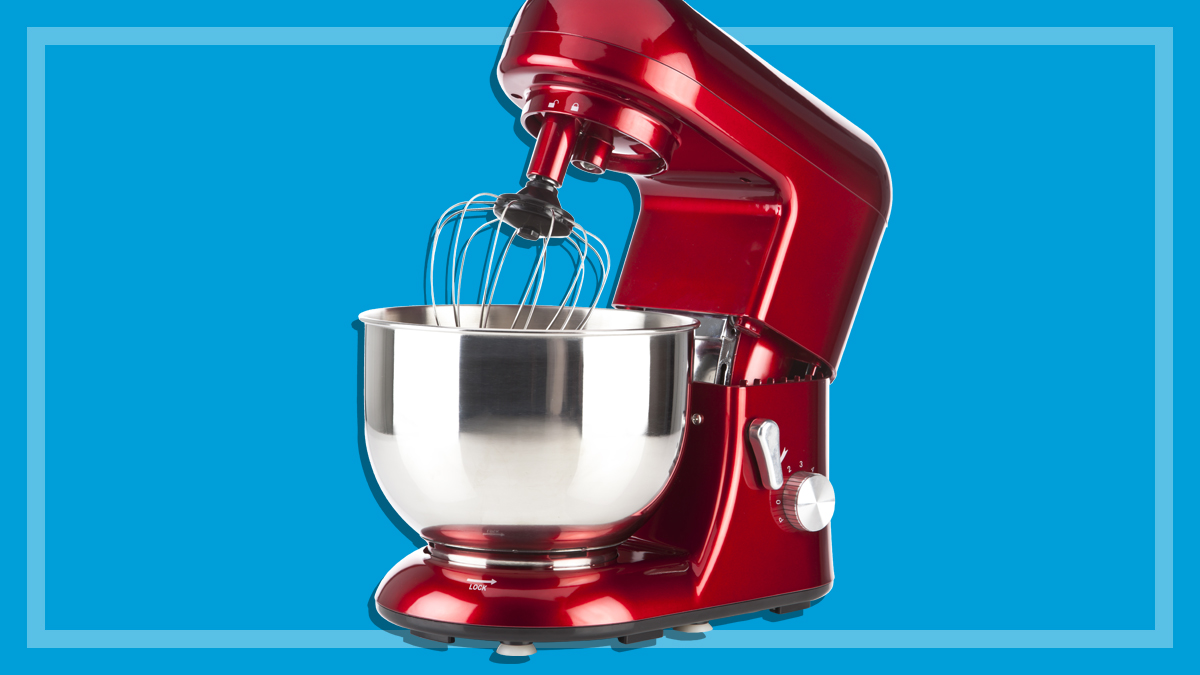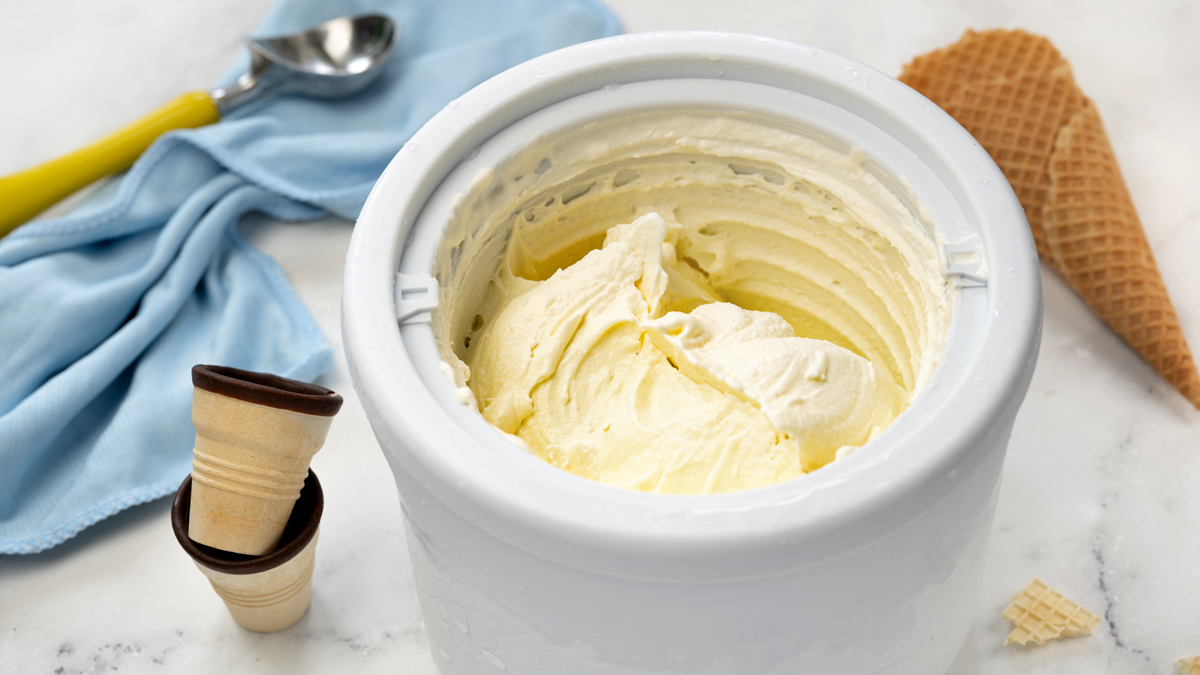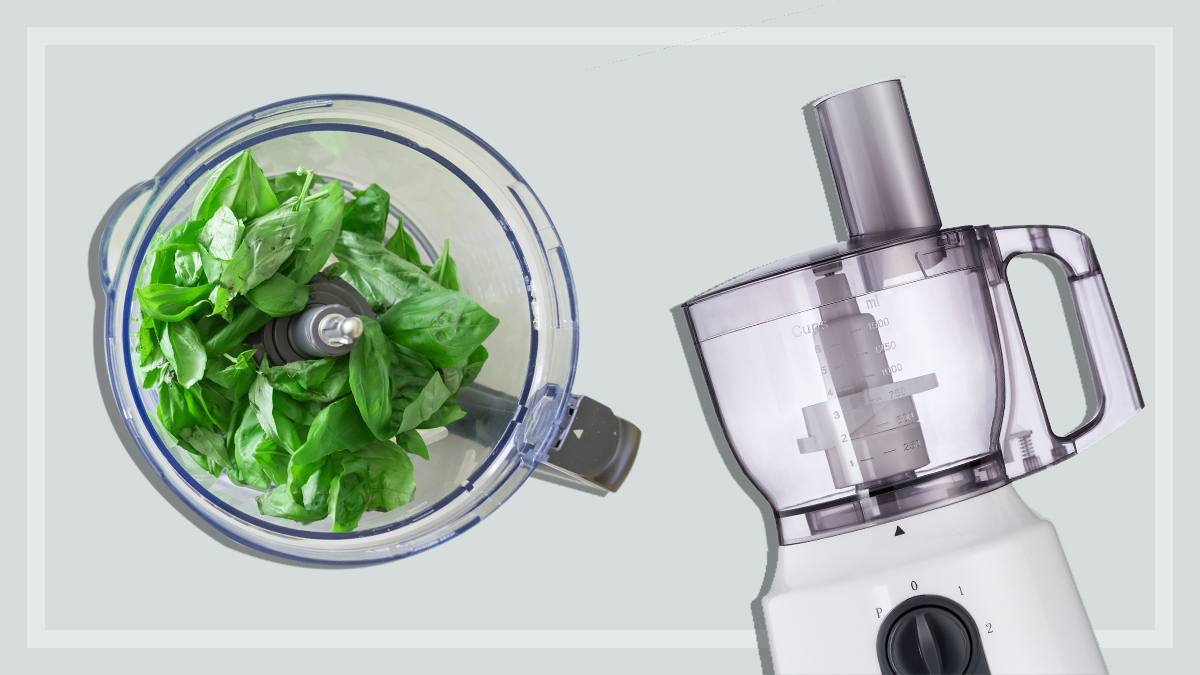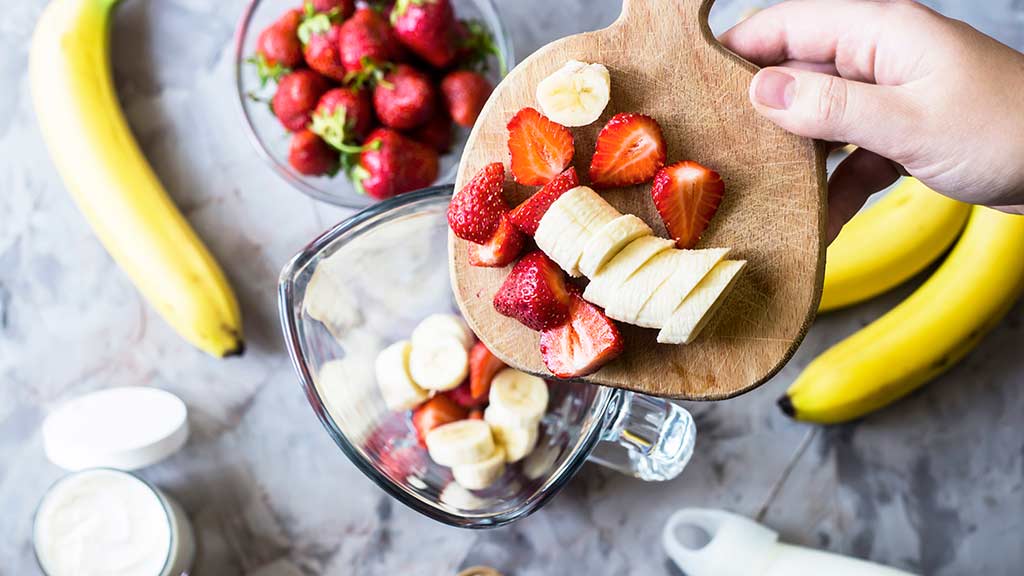Get our independent lab tests, expert reviews and honest advice.
Kitchen safety 101
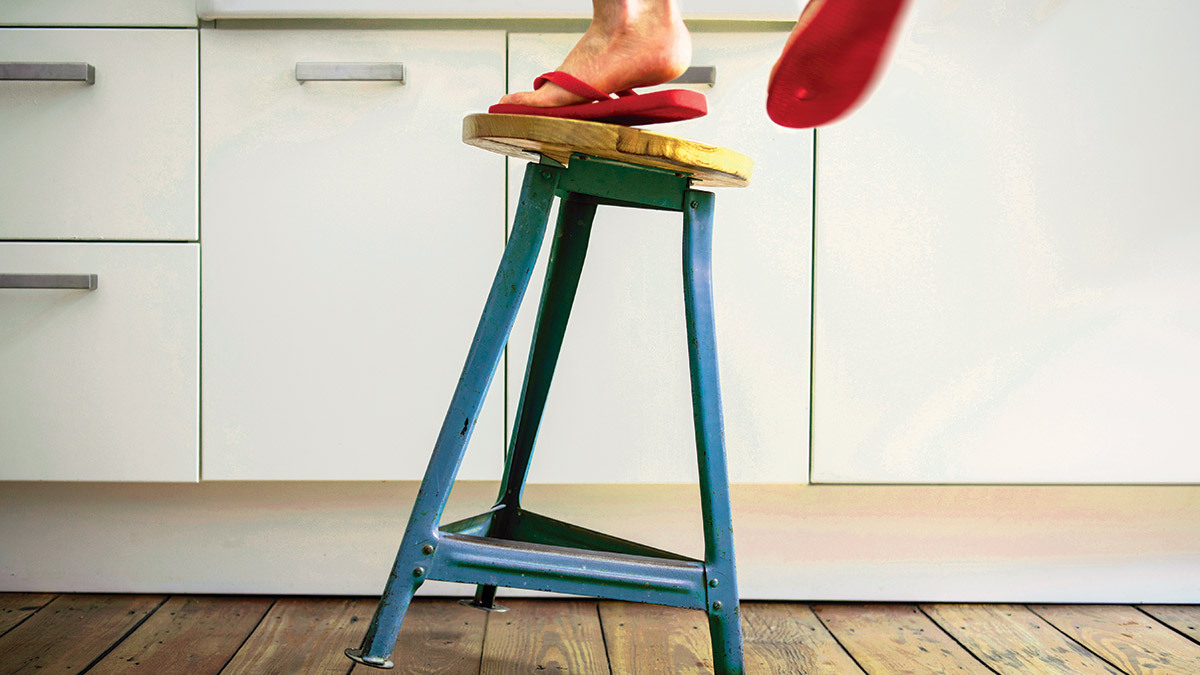
There’s only one room in your house (we hope) where you can find sharp knives, boiling liquids and searing hot metal, all within arm’s reach – so it’s little wonder that the kitchen can be a dangerous place.
Although kitchen accidents are common, most of them are avoidable with a bit of common sense and some basic safety knowledge.
Our in-house home economist and kitchen safety expert Fiona Mair gives her advice on how to avoid some of the most common kitchen injuries.
If you do get injured in the kitchen, seek medical attention immediately.
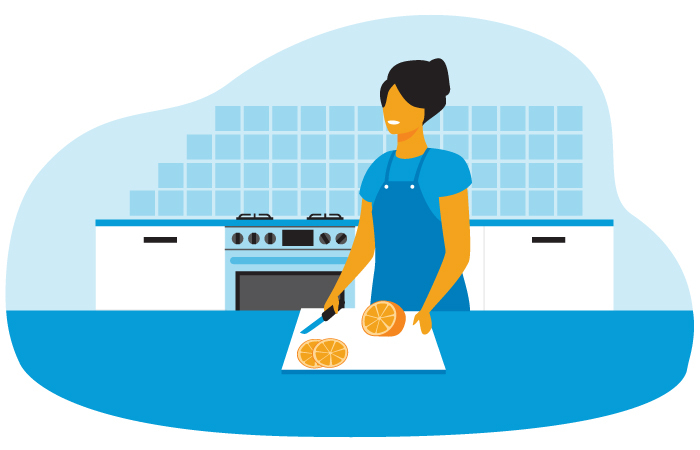
Knife cuts
According to the Victorian Injury Surveillance Unit (VISU), cutting and piercing injuries were the leading cause of kitchen-related presentations at Victorian emergency departments in the five-year period between 2015 and 2020.
We all know knives can be dangerous, but when you’re using them every day, it’s easy to get complacent about safety.
Blunt knives
Ironically, a blunt or ‘dull’ knife can actually be more dangerous than a sharp one.
“Cutting with a blunt knife requires you to use more pressure, which can cause the knife to slip,” says Fiona.
By contrast, a sharp knife will slice directly into the food you’re cutting, rather than slipping off to the side.
Safety tips
- Keep your knives sharpened.
- Never put knives in the dishwasher (the chemicals can blunt them).
Most common cause of home kitchen injuries
Based on emergency department presentations in Victoria from July 2015 to June 2020*
Cutting/piercing – 3297
Fall – 2442
Hit/struck/crush – 984
Fires/burns/scalds – 673
Unspecified unintentional – 184
Foreign body – natural orifice – 145
Poisoning – 61
Natural/environmental/animals – 54
Machinery – 15
Choking/suffocate – 8
Other specified unintentional– 353
*(n-8216). Data and analysis provided by the Victorian Injury Surveillance Unit (VISU), Monash University.
Cutting items you’re holding
If you’re cutting an item you’re holding, there’s a real risk the knife could slip and cut your hand. Common culprits are fruits such as avocados and oranges, or bread rolls and bagels.
Emergency department nurse Lucy Osborn says it’s quite common for people to misjudge how sharp a knife is and cut straight through the food into their hand or wrist.
“I recently had a patient who was trying to get an avocado seed out while holding the avocado in her hand,” says Lucy. “She didn’t realise how sharp the knife was – it cut straight through the seed and into her hand.”
Safety tip
When cutting items such as bread rolls or avocados, place the food item flat on a cutting board. Then grip the top lightly with your fingers before cutting parallel to the chopping board.
Leaving knives in the sink
If your washing up technique is to fill a sink with sudsy water and toss in all your dirty plates and utensils, make sure you separate out the knives first. Knives hidden under soapy water can easily cut your hands while you’re washing.
Safety tips
- Always hand wash and dry your knives separately.
- Store knives safely in a knife block or a separate area in your drawer (make sure they’re all pointing in the same direction and are placed sharp edge down).
Cutting board mishaps
Using a cutting board can help your knives stay sharp, but it’s important to make sure the board you’re using is stable.
“Avoid warped or plastic chopping boards – wooden boards are usually more stable and they won’t blunt your knives,” says Fiona.
Safety tip
If your board is slipping around, use a non-slip mat or a tea towel underneath it to keep it still.
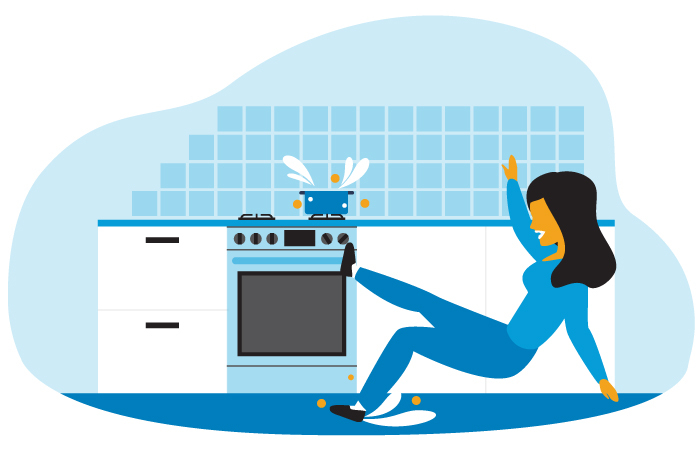
Slips and falls
According to the most recent report from the Australian Institute of Health and Welfare, falls are the leading cause of injury and injury deaths in Australia, with people over 65 years-old at the highest risk of falling.
Although slips and falls can have many causes, the kitchen presents a few specific risks to avoid.
Slips
“Any kitchen floor surface can become dangerous when wet,” warns Fiona.
“It only takes a few splashes of oil, water and even food scraps for your floor to become slippery.”
Safety tips
- Clean up any liquid spills straight away and watch out for oil on the floor.
- Watch out for oil that “spits out” onto the floor – this can become very slippery and is easier to miss than a puddle of liquid.
You can also buy non-slip kitchen mats for areas prone to spillage (such as in front of the sink or stovetop).
Falls
Reaching for that rarely used spice mix in the back of your top cupboard can be risky if you decide to stand on something that’s not stable. If you do need to reach a high object, avoid standing on chairs with wheels or other items that aren’t intended for standing on, such as cardboard boxes or bins..
Safety tips
- Always use a step ladder or step stool to reach up high.
- Organise your cupboards so that often-used items are closer to hand and you don’t always need a step ladder to get them.
Which age group had the most kitchen injuries?
Based on emergency department presentations in Victoria from July 2015 to June 2020*
0-14 years – 29%
15-24 years – 9.7%
25-64 years – 44.8%
65+ years – 16.5%
*(n-8216). Data and analysis provided by the Victorian Injury Surveillance Unit (VISU), Monash University
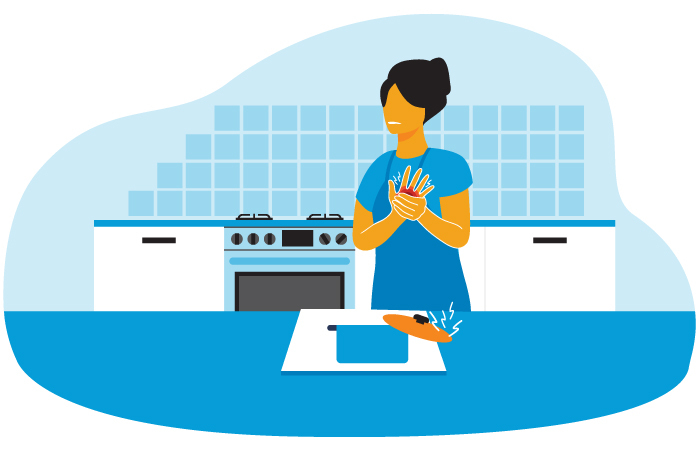
Burns and scalding
Almost 6000 Australians are hospitalised every year as a result of a burn or a scald.
Almost half (about 45%) of these are caused by contact with hot drinks, foods, fats, cooking oils and hot water – all of which are present in the kitchen.
Burns
“Frypans full of hot oil, kitchen appliances with hot exteriors and hot oven trays are all common kitchen hazards that can lead to minor and major burns,” says Fiona.
Lucy Osborn says some of the most common serious kitchen burns she sees in the emergency department are caused by hot oil flicking into the eyes.
“Hot oil in your eye can do a lot of damage,” she says. “If this happens to you, get straight into the shower and run cold water over the eye for 20 minutes.”
Safety tips
- Always use oven mitts when handling pots or pans or when removing baking dishes or trays from ovens or microwaves.
- Never use a damp tea towel to remove trays from the oven – the wet cloth will heat up much faster than a dry one and can burn your hands.
- If possible, choose an oven with telescopic runners, which are a safer option when sliding shelves out to check on food.
- Don’t wear loose-fitting clothing around open flames.
- Use a frying splatter guard when frying.
Scalds
A scald occurs when the skin comes into contact with very hot liquid or steam. Pots and pans full of liquid, a kitchen kettle and even a hot water tap can all cause scalds.
According to Lucy, it’s often children who get scalded in the kitchen.
“These types of injuries usually occur when the handle of a pot or pan full of boiling water or milk is left overhanging the stove,” she says. “The child can knock or pull down on the handle, causing the contents to fall down on top of them.”
She says kitchen scald injuries can be life threatening, especially in children.
“If you burn inside your mouth or airway, it can cause the airway to close over, making breathing impossible,” she says.
“Or, if the burns are affecting a large percentage of the body, this can cause severe dehydration, which can also be life threatening.”
Safety tips
- When removing lids from pots on the cooktop or appliances such as rice cookers or multi cookers, always lift the lid away from you to direct the steam away from your face.
- Turn the handles of saucepans towards the back of the stove.
After heating hot liquid (such as soup or hot chocolate) in the microwave, let it sit there for 60 seconds before taking it out. The container may only feel warm, but the liquid inside can be very hot.
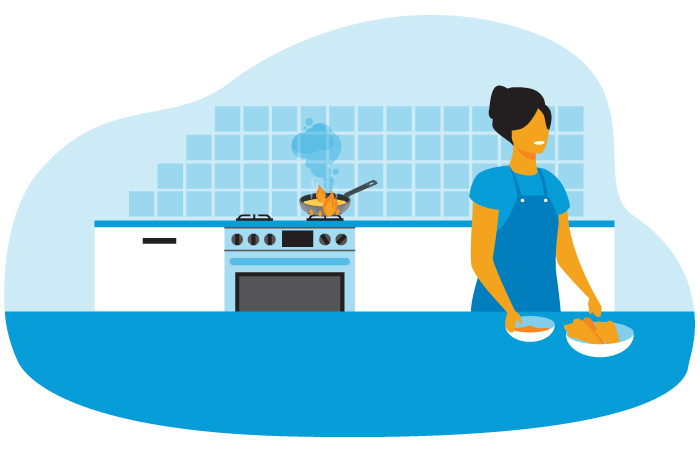
Kitchen fires
According to Fire NSW, nearly half of all residential fires start in the kitchen. The stove, oven, grill and microwave are the main places where fires can start, but the common causes aren’t always what you’d expect.
“Kitchen fires can be caused by overheating oil, overcrowding the pan when deep frying, and placing appliances too close to flammable materials,” says Fiona.
Safety tips
- Don’t leave cooking food unattended – and make sure you turn off all cooking appliances after using them.
- When cooking with oil, make sure you’re using a big enough pan and heat the oil slowly to stop the fat spitting.
- Clean your grill after every use – leftover crumbs and fat can easily catch alight.
- Make sure you have a fire extinguisher and fire blanket in your kitchen.
- Never use water to put out a kitchen fire.
- Don’t keep flammable items such as tea towels near the stove or other hot appliances.
- Never put items that aren’t microwave safe in the microwave. This applies especially to items that contain metal, as they can quickly spark and cause fires.
- Never heat a wheat bag for longer than three minutes and always put a cup of water in the microwave when heating the bag to lower the fire risk.
- Be careful heating microwave popcorn – follow the instructions and always begin with the minimum heating time specified.
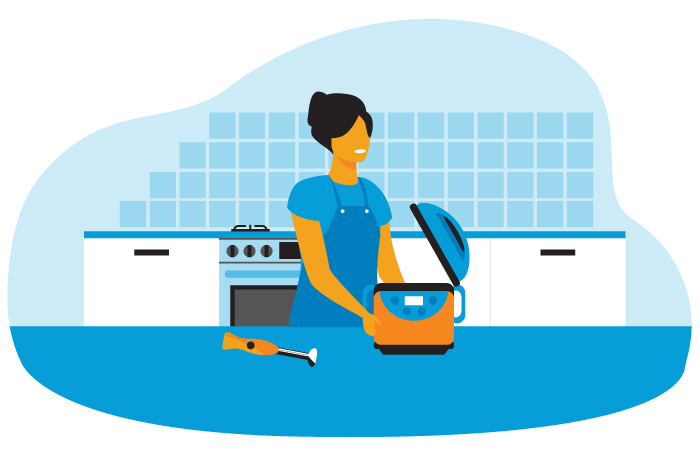
Appliance accidents
Any appliances with sharp blades such as food processors, blenders or mandolins can cause accidental cuts if you don’t handle them properly.
But Fiona says that faulty appliances can also cause serious injuries, ranging from kitchen fires to pressure explosions and even electrocution.
“Keep your appliances maintained by cleaning parts that may become clogged, like pressure cooker gaskets, and replace rubber seals in your blender regularly,” she says.
Safety tips
- Make sure you’ve turned off the power before you assemble or disassemble any appliance.
- Read the safety instructions before using a new appliance.
- Check power cords aren’t hanging over a heat source and aren’t damaged in any way.
- Clean the blades separately and don’t soak them in the sink.
- Never put your hand down the chute of a food processor or blender to dislodge food.
- Dry your hands before plugging or unplugging appliances.
- Register your appliance online and check the ACCC product recall website to find out if your appliance has been recalled.
Home kitchen injuries
Based on emergency department presentations in Victoria from July 2015 to June 2020*
Most common body region injured
Wrist and hand – 47%
Head – 22%
Most common injury type
Open wounds – 45%
Superficial injury – 15%
Fracture – 11%
Burns – 8%
*(n-8216). Data and analysis provided by the Victorian Injury Surveillance Unit (VISU), Monash University.
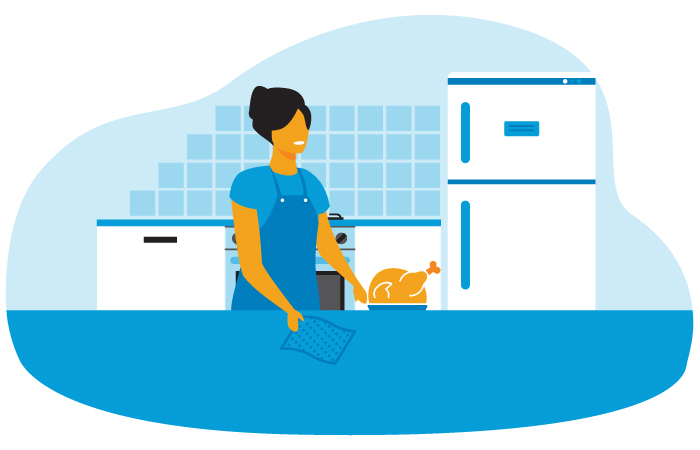
Food poisoning
“Food poisoning in home kitchens is more common than you think”, says Fiona.
In fact, food poisoning affects an estimated 4.1 million Australians each year. Many cases are preventable if you follow simple food safety tips in your home kitchen.
Osborn says raw chicken is a very common cause.
“Most of the cases I see in the emergency department are caused by chicken not being cooked properly or from people not cleaning chopping boards or knives thoroughly after using them to prepare raw chicken,” she says.
Safety tips
Keep it hot or cold:
- The bacteria that causes food poisoning grows more rapidly between temperatures of 5°C and 60°C. So, as a rule of thumb, keep food below 5°C (in the fridge) or heat it above 60°C.
- Don’t eat food that’s meant to be in the fridge if it’s been left out for two hours or more.
- When cooking or reheating foods, make sure they reach 60°C or hotter.
- Always thaw food in the fridge, not on the bench.
Keep it clean:
- Wash your hands with soap and water before and after handling food.
- Regularly wash and sanitise, or replace, cloths and tea towels you use to wipe benches and kitchen equipment.
- Wash food before you eat it, especially anything that could contain soil, such as lettuce and leeks.
- Wash kitchen equipment with warm soapy water after preparing food.
General:
- Keep an eye on use-by dates – simply sniffing food won’t always tell you if it’s off.
Always keep raw and cooked foods separate, and don’t use the same cutting board or knife for both unless you’ve washed them thoroughly between uses.

